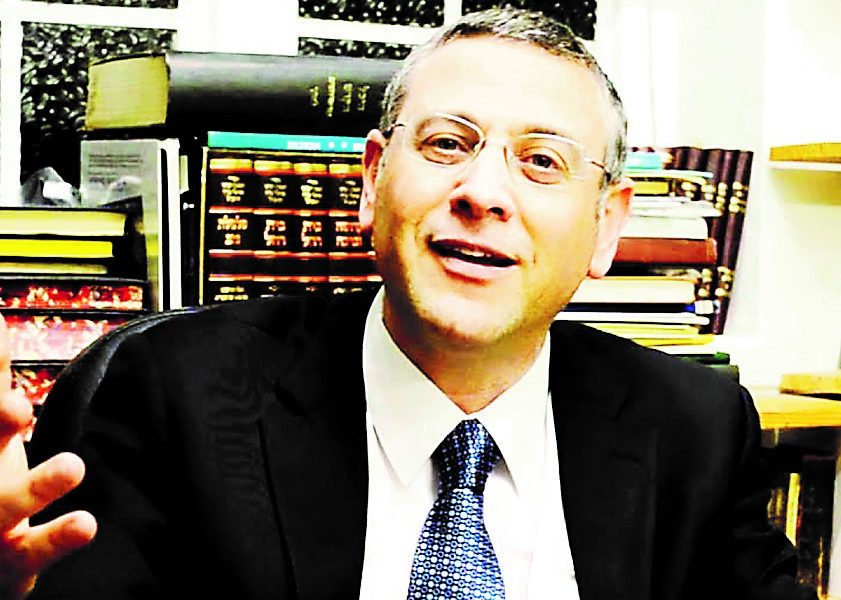News
Jerusalem, the ancient city that breaches walls
Jerusalem is much more than the spiritual capital of the Jewish people, it’s a city that unites opposites. Secular and religious, Arab and Israeli, Jew and Muslim are drawn together by the power of this ancient city.

JORDAN MOSHE
So said Rabbi Binyamin Lau, community leader, author and resident of Jerusalem this past Sunday. Lau addressed a South African audience via Zoom while in his car en-route to Jerusalem from Tel Aviv. He pulled over at a petrol station to chat to South Africans at the behest of the Israel Centre.
“There are two roads which connect Jerusalem and Tel Aviv,” said Lau in commemorating Yom Yerushalayim, which took place last week. “You can take either Road 1 or Road 443. Whichever you take, it feels like you’re travelling from one state to another, so different are the two cities.”
He said it’s no secret that Jerusalem and Tel Aviv are worlds apart in spite of the relatively short distance between them.
“They feel like two different countries,” said Lau. “Tel Aviv is liberal, secular, and pluralistic. On the other side, Jerusalem is steeped in tradition and religion.
“Jerusalem is about the past. Set amongst ancient stones, it speaks for the old days and is steeped in memory. Tel Aviv, however, captures the present, and doesn’t look back. It faces the ocean, faces new opportunities.”
In spite of these polarities, Lau believes the cities complement one another in a unique way. He learned this first-hand two years ago, when he officiated at the funeral of Chaim Guri, a renowned Israeli poet who had grown up in Jaffa, Tel Aviv, and was buried in Jerusalem.
“His funeral consisted of two parts,” said Lau. “The first was held in the yard of the Jerusalem theatre, attended by hundreds who spoke of the great cultural and liberal figure Guri had been.”
The second part was more private, held on Har Hamenuchot where Guri was laid to rest in accordance with Jewish rites, including kaddish.
“It was here that I noticed two old men with a bag of sand between them,” said Lau. “It turned out they were friends of Guri from the Palmach days in 1948. They explained to me that they had brought sand from a Tel Aviv beach to place in the grave at Guri’s request. He wanted to be buried with both Tel Aviv and Jerusalem.
“Guri wanted to mix the two essences. He knew how important is was to have them both together.”
Subsequently, Lau officiated at the funeral of Amos Oz, another respected Israeli author who was born in Jerusalem and laid to rest at Kibbutz Hulda, located between Tel Aviv and Jerusalem.
“He had spent the last years of his life in Tel Aviv, the opposite of Guri,” said Lau. “After the experience at Guri’s funeral, I decided to take sand from Jerusalem to place in Oz’s grave. I said to Amos, ‘Here, I brought Jerusalem to Tel Aviv for you.’ He, too, was buried with both cities.”
This blending of the two cities represents the story of the Jewish people, Lau said, and is one we should keep in mind.
“We look at Israel today, and find ourselves in a situation which feels like we’ve been cut into two nations, one secular and one religious,” he said. “Some feel we aren’t one nation at all. The fact is that we are one, and these are two sides of that one united people. We just need to find the bridge between them.
“There is one Jewish state, and one Jewish people. Yom Yerushalayim celebrates the city of unity, and teaches us the importance of being united. It’s for this reason that Jerusalem is known as a city which knits its inhabitants together.”
This duality is a reality in Jerusalem itself, a fact illustrated to him when he participated in the Jerusalem Marathon a few years ago.
“When I ran the marathon, the route took me from the entrance of the city to the Old City and back,” said Lau. “I went past the shuk, past bustling crowds all the way to Jaffa Gate in the older part of Jerusalem. I saw secular and religious, new and old. It’s all in one space.”
It’s not only Tel Aviv and Jerusalem which are so different, different parts of Jerusalem also offer a contrast. It’s no regular city, said Lau, but one which echoes the rich, religious past of our people and simultaneously rings with the sounds of the present.
“That’s the conflict of Jerusalem: it contains both,” said Lau. “We walk the line between secular and religious every day. It’s difficult, but it’s so important.”
This duality is true also of the bond between Jews and Arabs in the city, he said.
“Jerusalem doesn’t just connect Jews with Jews, but with others as well,” he said. “The Jews of Western Jerusalem are joined with the Arabs of the Eastern side, and the city itself unites them.
“It’s a huge challenge. While we believe that it’s a Jewish state and city, that Jewish part lives alongside something else. Israel is a democracy, and as Jews, we need to care about all of G-d’s creation.”
Yom Yershulayim celebrates Jerusalem in its entirety, Lau stressed, including all of its people.
“This includes the Arabs and Muslims on the east side of the city,” he said. “Recognising them is part of my responsibility as a Jew, a rabbi, and a citizen of this incredible city.
“Bridging opposites in Jerusalem on a daily basis is far from easy, but the city itself joins them. Jerusalem binds heaven and earth, holy and secular, Jews and those around us. We need to make that bridge a reality.”